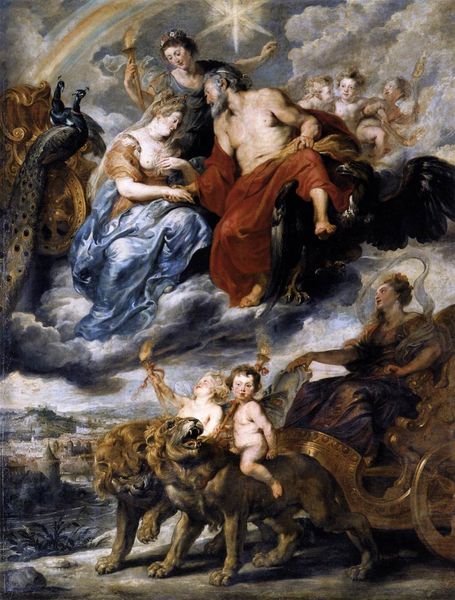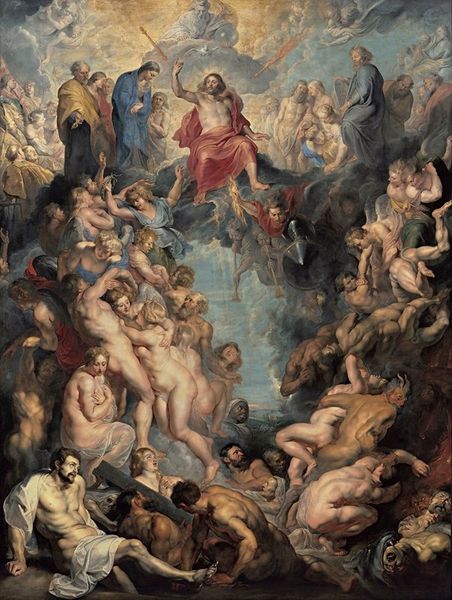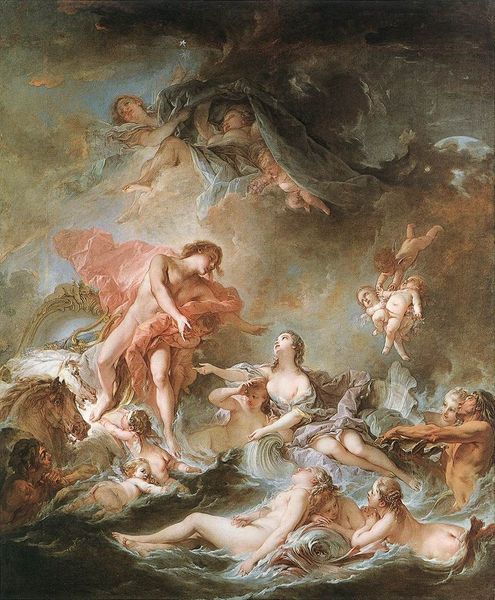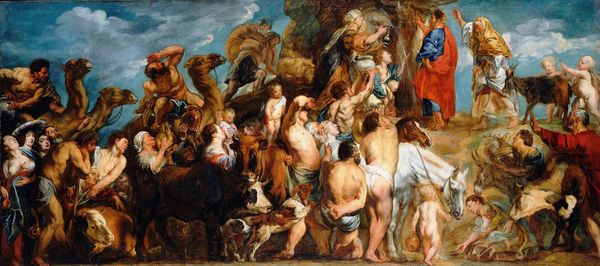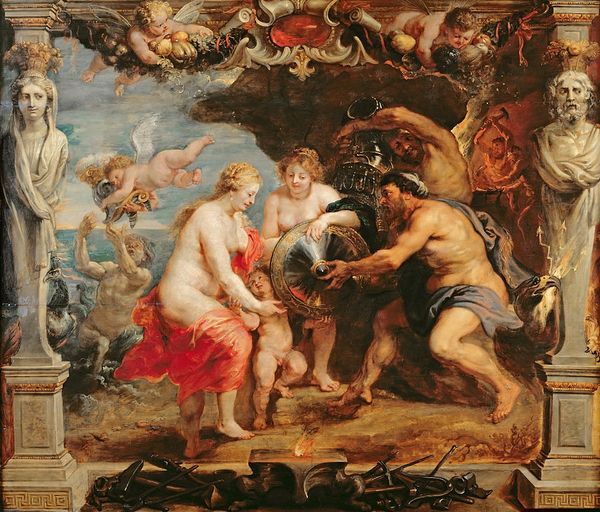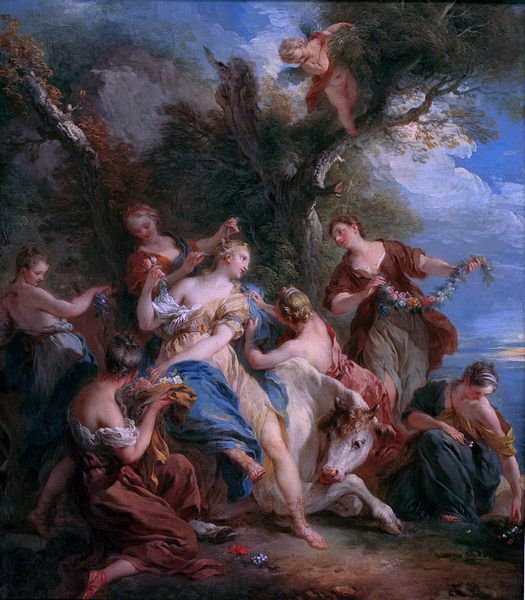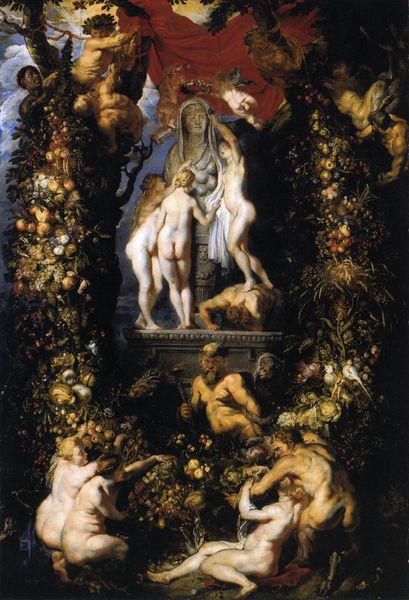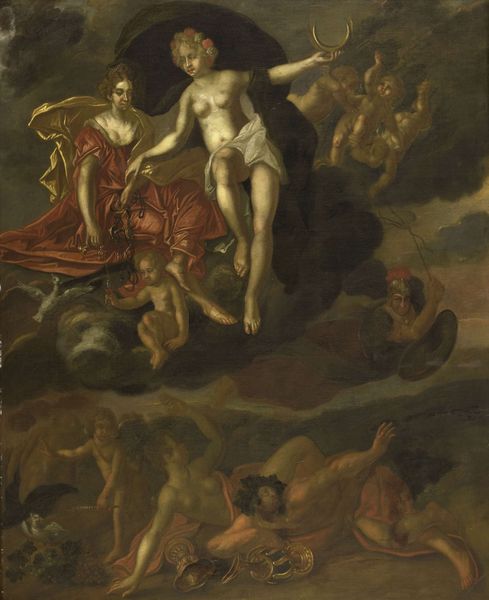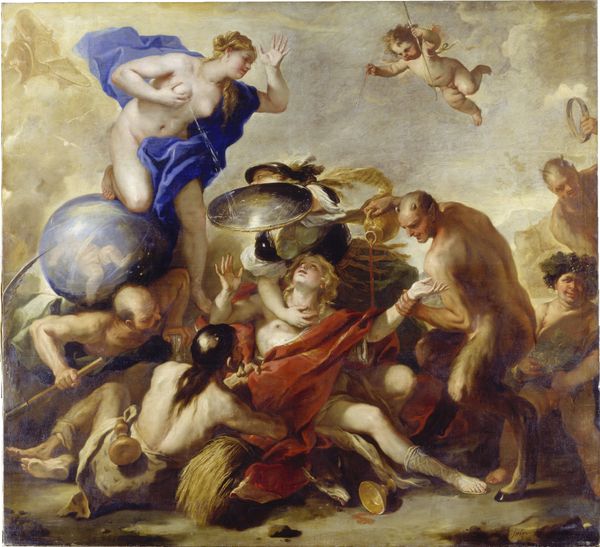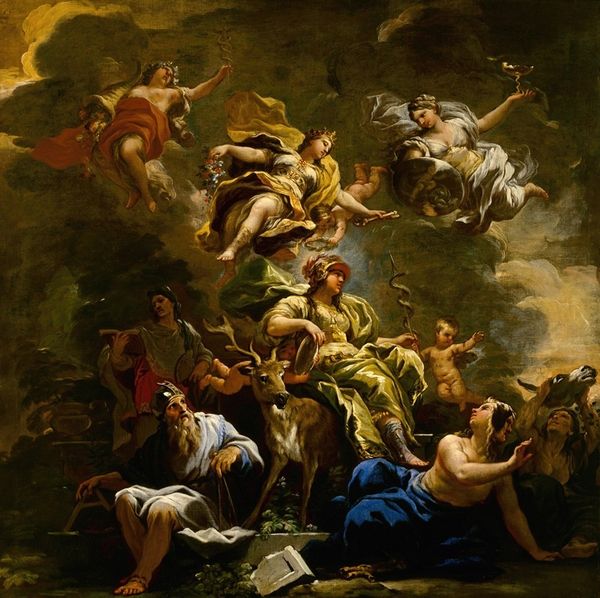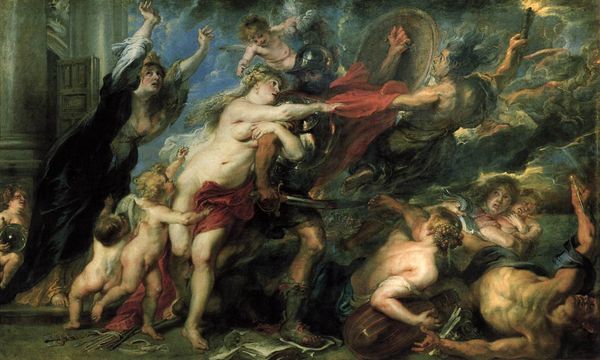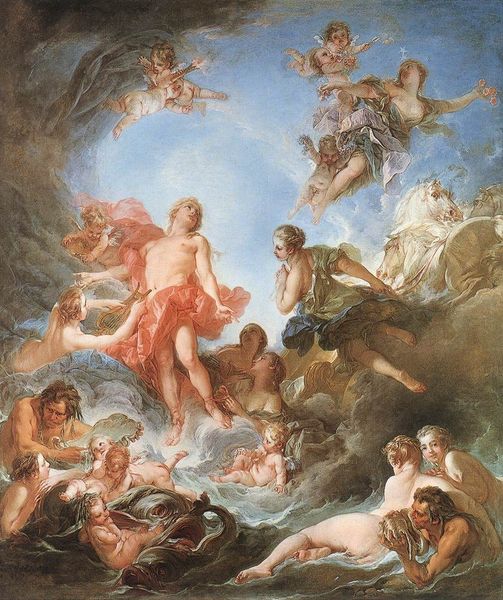
painting, oil-paint
#
allegories
#
allegory
#
baroque
#
fantasy art
#
symbol
#
painting
#
oil-paint
#
figuration
#
oil painting
#
mythology
#
history-painting
#
academic-art
Dimensions: 184 x 139 cm
Copyright: Public domain
Curator: Jacob Jordaens painted this exuberant canvas in 1654. Currently residing in the National Gallery in Oslo, it’s known as "Allegory of the Peace of Westphalia". Editor: It's chaotic! A riot of bodies, divine figures, swirling clouds… and such a warm palette despite the implied conflict. Look at those robust Rubensian figures! The diagonals are just incredible, really directing the eye from the darkness to the bursting light. Curator: Indeed. The "Peace of Westphalia" ended the Thirty Years' War in 1648. Jordaens, like many artists, was commissioned to create works celebrating the restoration of peace. The painting, dense with symbolism, served as a piece of political propaganda. Note the prominent inclusion of figures representing the Habsburgs, central to securing this lasting truce. Editor: Symbolism is clearly intentional in the clusters and carefully arranged groupings. Notice how Chronos, Father Time himself, seems to actively drive away the figures of war with an angel floating above them offering peace. I’d say, structurally, the composition uses this upper scene to contrast the terrestrial chaos at the bottom. What’s that snarling dog? Curator: It represents discord, as do the other defeated figures being trampled underfoot by the chariot of peace, driven by Neptune, a figure alluding to the importance of trade routes in securing stability after war. Editor: The cascading light also underscores this triumph of harmony. It almost washes away the trauma below; the brushstrokes even become softer and blurrier as we rise up. Curator: Jordaens' allegory certainly promotes a particular narrative of the peace. The painting was likely meant to reassure and unify various political factions under a hopeful image of a shared future. Editor: It’s compelling how he manages to make such an overt political statement visually rich. Beyond the context, there is the striking use of color to indicate the vanquishing of darkness with heavenly light. The piece itself is almost like an unfolding story that transcends its own context. Curator: It truly encapsulates the baroque style with its complexity and dynamism. It’s been illuminating to see it from a formalist point of view! Editor: And, seeing how Jordaens uses those qualities for broader social purposes truly enhances the appreciation for a painting as complex as this one.
Comments
No comments
Be the first to comment and join the conversation on the ultimate creative platform.
